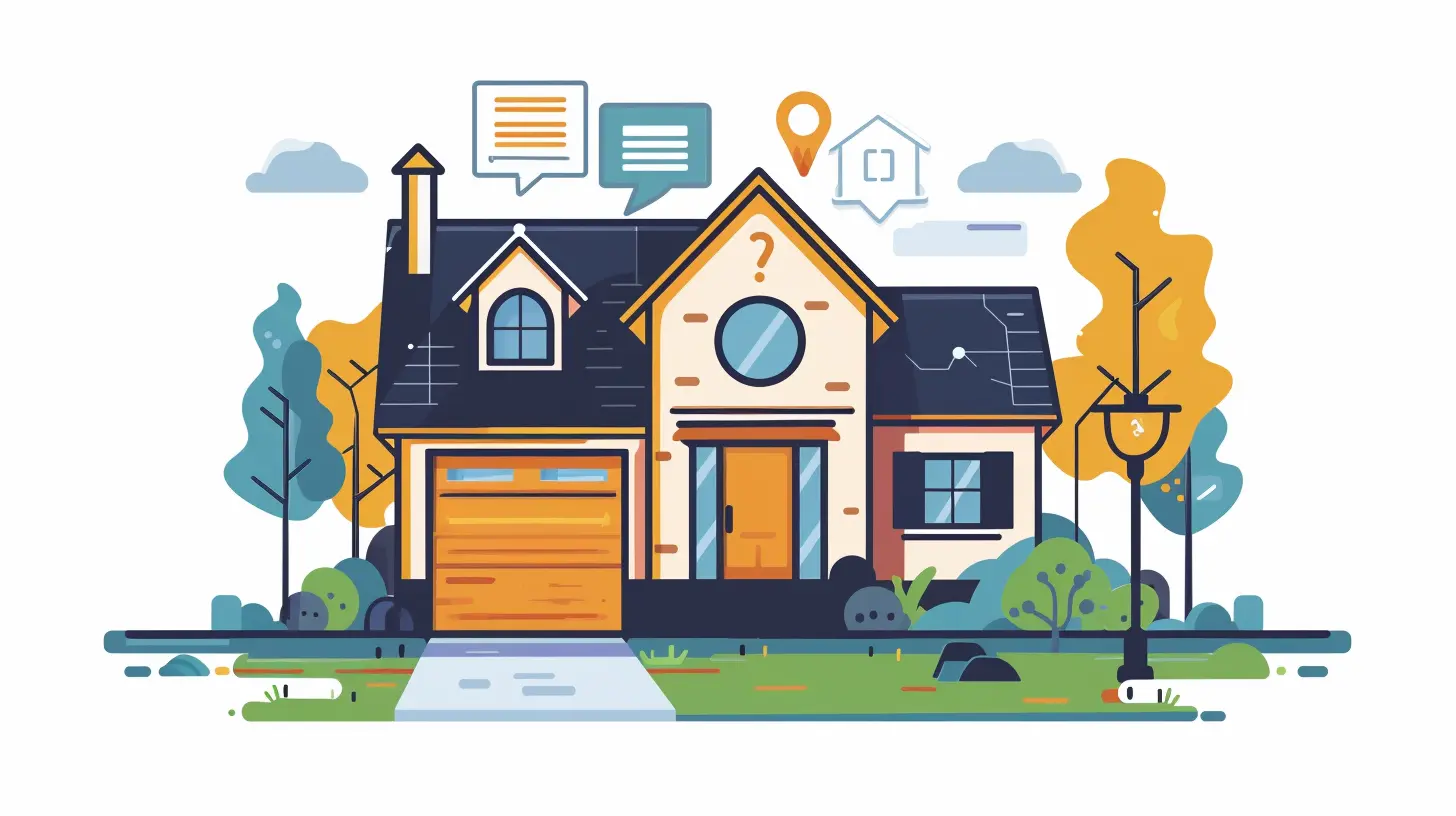The Role of Edge Computing in Real Estate Data Management
18 August 2025
Real estate has always been a data-intensive industry, from property listings and market trends to tenant applications and smart building analytics. But as the industry embraces technologies like IoT, AI, and big data analytics, managing this massive flow of information has become a major challenge.
Enter edge computing—a game-changing technology that processes data closer to where it's generated, reducing latency, improving efficiency, and offering real-time insights. But how does it fit into real estate data management? Let’s dive in.

What Is Edge Computing?
Before we explore its impact on real estate, let’s break down what edge computing actually is.In simple terms, edge computing is the practice of processing data near its source rather than relying on centralized cloud-based systems. Instead of sending all data to a distant server, edge computing allows devices to analyze and act on the data locally before sending relevant information to the cloud.
Think of it this way—imagine you're at a fast-food drive-thru. Would you rather wait for your order to be prepared at a restaurant miles away, or have everything cooked and ready right at the nearest location? That’s the essence of edge computing—it brings computing power closer to where it's needed.

Why Is Edge Computing Important in Real Estate?
Real estate data is growing at an exponential rate due to:- Smart sensors in buildings
- Real-time property analytics
- AI-powered property management
- Automated security systems
- Tenant and visitor tracking
Traditional cloud-based systems often struggle to handle this volume efficiently in real time. That’s where edge computing steps in, offering a faster, more reliable, and cost-effective solution.

Key Benefits of Edge Computing in Real Estate Data Management
1. Real-Time Data Processing for Smart Buildings
Modern smart buildings are loaded with IoT devices—from thermostats and lighting controls to security cameras and energy management systems. These systems generate vast amounts of data every second.If every piece of this data had to be sent to a centralized cloud for processing, there would be delays, bandwidth overloads, and increased operational costs. Edge computing eliminates these issues by processing data locally and only sending the most relevant insights to the cloud.
For example, a smart HVAC system can adjust temperatures in real-time based on occupancy without needing to ping a distant cloud server constantly. This minimizes lag and enhances efficiency.
2. Enhanced Security and Privacy
Real estate deals with sensitive information—tenant details, financial records, and surveillance data, to name a few. Sending all this data to a central cloud increases security risks.Edge computing reduces those risks by keeping data processing local, limiting exposure to cyber threats. This is especially crucial for:
- Residential buildings with smart security systems
- Commercial spaces using AI-powered surveillance
- Property management platforms handling financial information
With edge computing, on-site security cameras can analyze footage locally and only store necessary clips on the cloud rather than exposing a constant data stream to cyber risks.
3. Lower Latency for Tenant and Property Management
Imagine a property management system that relies solely on cloud-based processing. If a tenant has a maintenance request, the system may take precious seconds (or longer) to process and respond.Now, with edge computing, that same request can be analyzed locally, allowing for faster automated responses and instant alerts to property managers. This enhances the tenant experience and improves operational efficiency.
4. Cost Savings on Cloud Storage and Bandwidth
Cloud computing services come with hefty costs, especially when handling large amounts of data. Transmitting every single data point from IoT sensors directly to the cloud racks up bandwidth costs over time.Edge computing helps cut down on unnecessary cloud usage by filtering and processing data locally. Only critical insights get sent to centralized storage, reducing cloud expenses significantly.
5. Better Performance for Smart Cities and Large-Scale Developments
For large-scale real estate developments like smart cities or massive commercial complexes, quick decision-making is essential. These environments have thousands (or even millions) of interconnected devices analyzing data every second.Edge computing ensures these systems can operate efficiently without overwhelming centralized servers. Whether it’s monitoring traffic patterns around a real estate district or optimizing energy use in an entire smart city, edge computing offers the responsiveness needed for large-scale property developments.

Use Cases of Edge Computing in Real Estate
Now that we’ve covered the benefits, let’s look at some real-world applications of edge computing in real estate.1. Smart Home Ecosystems
From voice assistants to security systems, smart homes rely on edge computing to deliver a seamless experience. A smart doorbell camera, for example, can analyze visitor movements locally and only send alerts to the homeowner if necessary, reducing false alarms.2. Commercial Building Management
Commercial spaces use IoT-enabled devices to optimize energy consumption, monitor foot traffic, and enhance security. Processing data locally ensures that these buildings run efficiently without constant reliance on cloud-based servers.3. Predictive Maintenance for Properties
Edge computing enables predictive maintenance by analyzing data from sensors installed in HVAC systems, elevators, and plumbing lines. It can detect potential failures before they happen, allowing property managers to schedule repairs proactively—saving both time and money.4. Real Estate Market Analytics
Edge computing can streamline real estate market data collection by processing localized insights instantly. This helps investors and realtors make faster, more informed decisions based on accurate and up-to-date information.Challenges of Implementing Edge Computing in Real Estate
While edge computing brings numerous advantages, it’s not without its challenges.- Upfront Costs: Installing edge computing infrastructure can be expensive, requiring investment in hardware and software.
- Integration Complexity: Many existing legacy systems in real estate may not be compatible with edge computing, requiring additional upgrades.
- Data Synchronization: Since edge computing processes data locally, ensuring seamless data synchronization with cloud-based databases can be tricky.
- Security Measures: Although edge computing reduces cybersecurity risks, it still requires solid security protocols since local devices can also be hacked.
The Future of Edge Computing in Real Estate
Despite these challenges, the adoption of edge computing in real estate is only expected to grow. With advancements in AI, 5G connectivity, and IoT technology, edge computing will become an integral part of real estate data management.Real estate professionals who embrace this technology early will gain a competitive edge (pun intended) by offering faster services, reduced operational costs, and enhanced tenant experiences.
As the industry evolves, edge computing will likely work hand-in-hand with cloud computing rather than replacing it altogether. The combination of both technologies will provide the perfect balance between efficiency, scalability, and security.
Final Thoughts
Edge computing is revolutionizing real estate data management, making property operations smarter, faster, and more cost-efficient. From optimizing smart buildings to improving tenant experiences, the benefits of processing data closer to the source are undeniable.For real estate professionals looking to stay ahead in an increasingly tech-driven industry, integrating edge computing into data management strategies isn’t just an option—it’s a necessity.
all images in this post were generated using AI tools
Category:
Real Estate TechnologyAuthor:

Kingston Estes
Discussion
rate this article
1 comments
Silas Torres
Great insights on edge computing’s impact on real estate! Emphasizing real-time data processing and security benefits adds significant value. Looking forward to seeing how this technology evolves in property management.
August 31, 2025 at 4:12 AM

Kingston Estes
Thank you for your feedback! I'm glad you found the insights valuable, and I also look forward to the exciting developments in edge computing for property management.


